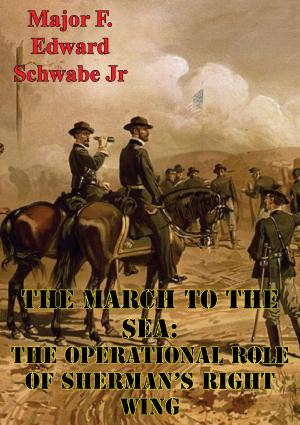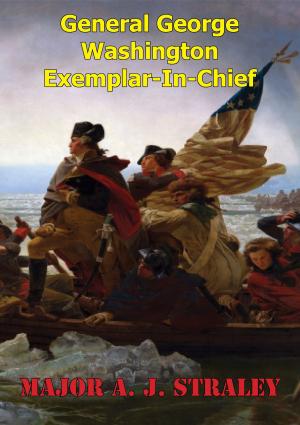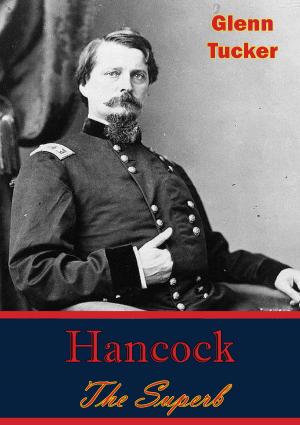The Four Decisions That Changed The Course Of The American Revolution
A Case Study Of Lieutenant General John Burgoyne’s Northern Campaign Of 1777 And Maneuver Warfare
Nonfiction, History, Military, Other, United States, Americas, 20th Century| Author: | Major Gerry W. Leonard Jr. USMC | ISBN: | 9781782899525 |
| Publisher: | Golden Springs Publishing | Publication: | November 6, 2015 |
| Imprint: | Golden Springs Publishing | Language: | English |
| Author: | Major Gerry W. Leonard Jr. USMC |
| ISBN: | 9781782899525 |
| Publisher: | Golden Springs Publishing |
| Publication: | November 6, 2015 |
| Imprint: | Golden Springs Publishing |
| Language: | English |
During the winter of 1776-1777, Lieutenant General John Burgoyne, who at the time was second in command of Britain’s Northern Army (based in Canada), proposed his “Thoughts for Conducting the War from the Side of Canada” to King George III. Unhappy with the lack of success during the Northern Campaign of 1776, King George approved Burgoyne’s campaign plan and chose Burgoyne to lead the Northern Army. Burgoyne’s plan was a simple two-pronged attack from Quebec to seize Albany and secure the Lake Champlain-Lake George-Hudson River Waterway. After seizing Albany, Burgoyne expected to linkup with a third force attacking north from New York City.
While strategic policies and decisions negatively affected Burgoyne’s campaign and the third force from New York City never really materialized, Burgoyne’s campaign concept was both feasible and achievable. Of the two forces attacking south from Canada, Burgoyne commanded the main attack force of 9,000-plus soldiers and Brigadier General Barry St Leger commanded a 2,000 man diversionary force. In his “Thoughts for Conducting the War from the Side of Canada,” Burgoyne intended to seize Fort Ticonderoga and develop a theater logistics base before advancing, via Lake Champlain-Lake George-Hudson River waterway, on Albany. Simultaneous with Burgoyne’s advance on Albany from the north, St Leger was advancing on Albany from the west, using the St Lawrence River-Lake Erie-Mohawk River waterway as a his axis of advance. Ultimately, Burgoyne believed that both attacks would make the Americans to split their forces in order to defend Albany.
While the British tackled supply problems, the Americans seized the initiative by harassing and delaying the British and destroying the only usable roads. By September, the Americans were dictating the terms of each engagement and controlling the tempo of the campaign.
During the winter of 1776-1777, Lieutenant General John Burgoyne, who at the time was second in command of Britain’s Northern Army (based in Canada), proposed his “Thoughts for Conducting the War from the Side of Canada” to King George III. Unhappy with the lack of success during the Northern Campaign of 1776, King George approved Burgoyne’s campaign plan and chose Burgoyne to lead the Northern Army. Burgoyne’s plan was a simple two-pronged attack from Quebec to seize Albany and secure the Lake Champlain-Lake George-Hudson River Waterway. After seizing Albany, Burgoyne expected to linkup with a third force attacking north from New York City.
While strategic policies and decisions negatively affected Burgoyne’s campaign and the third force from New York City never really materialized, Burgoyne’s campaign concept was both feasible and achievable. Of the two forces attacking south from Canada, Burgoyne commanded the main attack force of 9,000-plus soldiers and Brigadier General Barry St Leger commanded a 2,000 man diversionary force. In his “Thoughts for Conducting the War from the Side of Canada,” Burgoyne intended to seize Fort Ticonderoga and develop a theater logistics base before advancing, via Lake Champlain-Lake George-Hudson River waterway, on Albany. Simultaneous with Burgoyne’s advance on Albany from the north, St Leger was advancing on Albany from the west, using the St Lawrence River-Lake Erie-Mohawk River waterway as a his axis of advance. Ultimately, Burgoyne believed that both attacks would make the Americans to split their forces in order to defend Albany.
While the British tackled supply problems, the Americans seized the initiative by harassing and delaying the British and destroying the only usable roads. By September, the Americans were dictating the terms of each engagement and controlling the tempo of the campaign.


![Cover of the book Co. Aytch Maury Grays, First Tennessee Regiment Or, A Side Show Of The Big Show [Illustrated Edition] by Major Gerry W. Leonard Jr. USMC](https://www.kuoky.com/images/2015/november/300x300/9781786251176-VTnK_300x.jpg)
![Cover of the book Memoirs Of The Confederate War For Independence [Illustrated Edition] by Major Gerry W. Leonard Jr. USMC](https://www.kuoky.com/images/2013/february/300x300/9781908902788-QQkl_300x.jpg)
![Cover of the book A Soldier's Recollections [Illustrated Edition] by Major Gerry W. Leonard Jr. USMC](https://www.kuoky.com/images/2013/february/300x300/9781908902771-kO4t_300x.jpg)










![Cover of the book The Gettysburg Campaign, June-July 1863 [Illustrated Edition] by Major Gerry W. Leonard Jr. USMC](https://www.kuoky.com/images/2015/november/300x300/9781786254382-HfLn_300x.jpg)